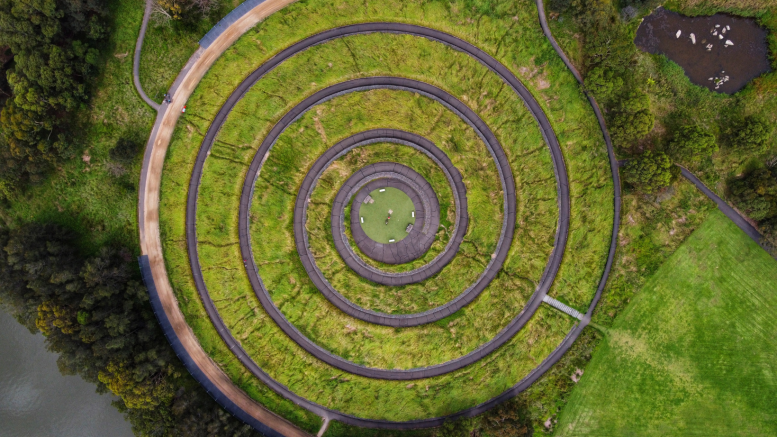What if the next generation of materials didn’t come from oil wells…
but from mushrooms, seaweed, agricultural waste, and trees?
What if we could replace plastics, foams, leather, Styrofoam, and petrochemicals —
not with weaker alternatives…
but with better, cleaner, regenerative materials grown by biology itself?
We’re flipping the script on materials —
and showing how nature’s chemistry is inspiring a new generation of regenerative products that heal ecosystems instead of harming them.
The Problem: Petrochemical Materials Are Breaking the Planet
Industrial materials — plastics, foams, synthetic fibers — are everywhere.
But they come with a massive cost:
- 400+ million tons of plastic waste each year
- Microplastics in oceans, air, and even our blood
- Fossil fuel extraction and toxic pollution
- Non-biodegradable materials lasting centuries
- Landfills overflowing with single-use petroleum products
We created a material economy that treats Earth as both a warehouse and a dump.
But nature already solved the materials problem —
with chemistry that is renewable, circular, and biodegradable.
The Flip — Regenerative Materials Grown by Biology
Regenerative materials are engineered from:
- Fungi
- Seaweed & kelp
- Cellulose from plants
- Bacterial fermentation
- Agricultural waste
Instead of extraction, these materials are:
- Grown
- Cultured
- Fermented
- Harvested renewably
- Returned to soil
- Fully biodegradable
Nature becomes the factory.
Let’s look at what this looks like in practice.
Real Examples — Biomaterials Changing the Game
Mycelium Packaging — U.S., EU
Companies like Ecovative and Mushroom Packaging use mushroom root networks to grow:
- Packaging
- Insulation
- Foam replacements
Fully compostable. Zero petroleum. Grows in days.
Seaweed Plastics — Indonesia, Chile, UK
Startups like Notpla, Evoware, and Sway make:
- Edible wrappers
- Seaweed-based films
- Biodegradable takeout boxes
These materials degrade naturally and help regenerate coastal ecosystems.
Example 3: Agri-Waste Plates & Utensils — India
Companies turn crop residues — like sugarcane bagasse and wheat straw — into:
- Plates
- Cups
- Food containers
Strong, heat-resistant, affordable — and compostable.
Microbial “Leather” — U.S. & Europe
Brands like Mylo, Zoa, and Modern Meadow grow leather-like textiles using:
- Fungi
- Bacterial cellulose
- Fermentation tanks
Zero animals. Zero toxic tanning. Lower emissions.
Bamboo, Hemp & Cellulose Fibers — Global
Regenerative fiber producers are making:
- Clothing
- Building materials
- Plastics alternatives
Bamboo grows fast, stores carbon, and requires no pesticides.
Example 6: Spent Grain Boards — U.S. Breweries
Upcycled brewery waste becomes:
- Biocomposite boards
- Packaging
- Furniture materials
Zero waste + new revenue streams for small breweries.
Example 7: Mycelium Building Bricks — Netherlands
Bio-based bricks grown from fungi offer:
- High insulation
- Fire resistance
- Low embodied carbon
Buildings literally grown from living systems.
Why Regenerative Materials Matter
Climate Impact
Most plastics come from fossil fuels.
Biomaterials slash emissions and carbon footprints.
♻️ Zero Waste
Materials return to soil instead of landfills.
Local Production
Biomaterials can be grown:
- In community facilities
- On farms
- In urban labs
- Using local feedstock
Decentralized manufacturing becomes possible.
Ecological Regeneration
Many materials — like seaweed — actively restore ecosystems while growing.
Economic Opportunity
Regenerative materials create:
- New rural income
- Community manufacturing jobs
- Local circular industries
- High-value urban labs and micro-factories
What Communities Can Do Now
1. Support local biomaterial makers.
Microbreweries, mushroom growers, seaweed farmers.
2. Build community biomaterials labs.
Shared fermentation spaces for youth and entrepreneurs.
3. Shift city procurement toward regenerative materials.
Packaging, takeout containers, construction materials.
4. Encourage schools to teach biomaterials innovation.
STEM + ecology + fabrication.
5. Support farmers who upcycle agricultural waste.
Turning “waste” into wealth.
6. Push for bans on single-use plastics — paired with local alternatives.
Policy + community manufacturing = impact.
The Big Shift
We don’t need more petrochemical products.
We need materials that:
- Grow with sunlight
- Regenerate ecosystems
- Compost back into soil
- Require no oil
- Strengthen local economies
- Work with nature, not against it
Because the future of materials isn’t synthetic —
it’s biological.
And when communities borrow from nature’s chemistry,
they design materials that nourish the world instead of polluting it.
That’s how we flip the script —
from extraction to regeneration,
from waste to nutrients,
from petrochemicals to living systems.
